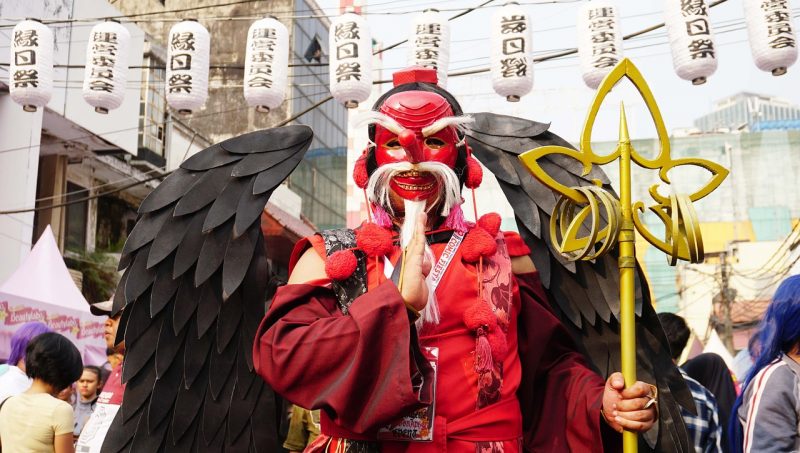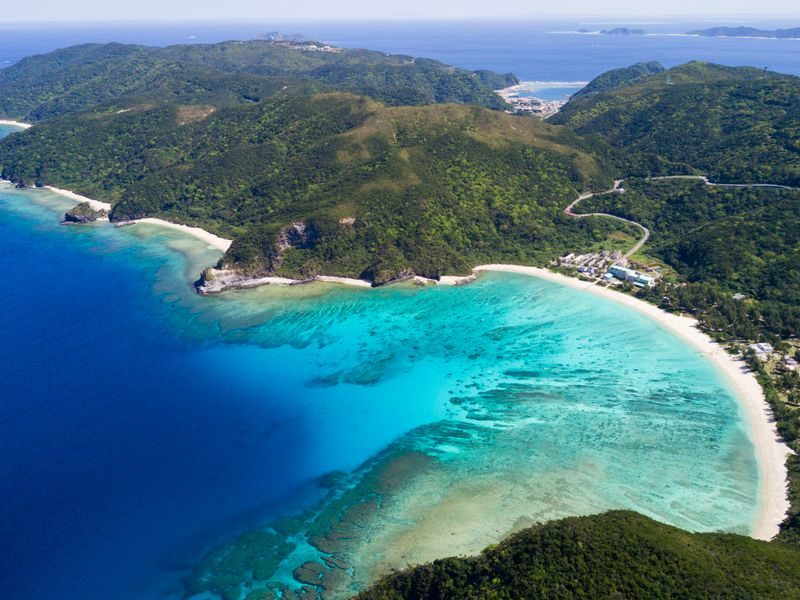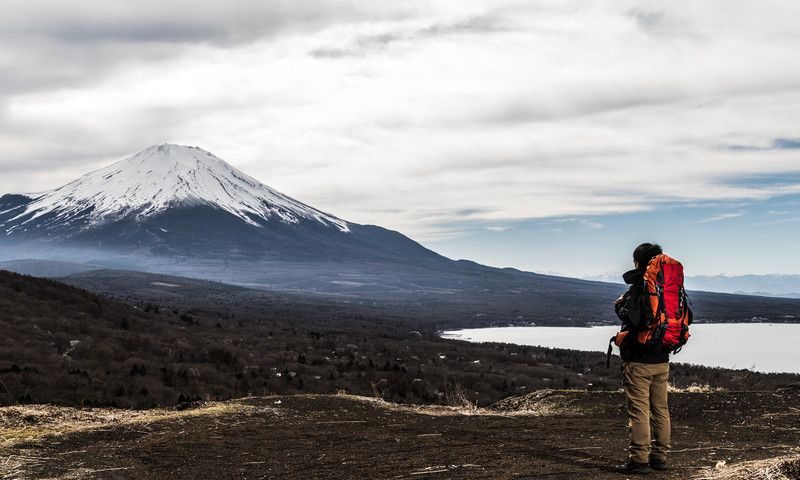When is the best time to visit Japan? This is a question without a simple answer. Japan is a year-round destination, with interesting activities, attractions, and festivities throughout the year.
Your decision will depend on several factors. First, do you wish to avoid the crowded, busy times, more expensive times, or hot, cold, or rainy weather? Second, what activities or events to do wish to enjoy? Are they seasonal or available year-round?
You’ve been saving up, making plans, and dreaming of your Japan vacation. For many, visiting Japan is a once in a lifetime opportunity. But, what time of year should you visit in order to have the best vacation possible?
Consider this helpful guide to determine the best and worst times for your trip to Japan.
Read more: Is it safe to travel to Japan?
Japan season by season highlights
You can enjoy Japan’s natural beauty at any time of the year. Check out the following suggestions for the best attractions and experiences in every season.
Read more: Things to know before traveling to Japan
Spring
Spring in most of Japan takes place from mid-March through May. Temperatures then average 40 to 65 degrees Fahrenheit (F), or 5 to 20 degrees Celsius (C). Weather can be unpredictable, so it is advisable to bring both warm weather and cold weather clothing.

Spring is one of the most popular times to visit Japan, largely due to the flowering trees of the ume plum blossom season and the sakura cherry blossom season. If traveling to witness these beautiful phenomena, keep in mind that the weather can alter the peak bloom times in any given year. Bloom times are also affected by geography, with blossoms opening earlier in southern regions and later in northern regions.
Golden Week, a series of national holidays, is also a busy time for travel in Japan. Many visitors avoid Golden Week due to the large crowds and crowded transportation.
Because both locals and international visitors travel in the spring, prices for travel and accommodations are often the highest during this season.
Cherry Blossom Viewing
Japan’s iconic sakura cherry blossoms are a draw for many travelers. Trees in the south begin to bloom in mid-March. The blossoms peak marches steadily north, concluding in the country’s northern reaches in May. Late March to early April is peak season throughout much of the country. The trees bloom for about a week in each location, so you can increase your viewing time by beginning your travels in the south and then moving north.

Expect large crowds at parks and shrines featuring cherry trees and busy transportation stations at this time. Book your accommodations early, as they often sell out well in advance.
If your visit falls in late May when the cherry blossom season is over, you can still immerse yourself in beautiful foliage at one of Japan’s many flower parks. These include magical wisteria tunnels.
Golden Week
Golden Week is a series of public holidays from late April to mid-May. It is often considered one of the “worst” times for international travelers to visit Japan. Many residents use their time off work to travel domestically during this time, resulting in crowded attractions, accommodations, and train stations. Prices often peak at this time.
Summer
Summers in Japan take place during the months of June through September. Temperatures range from 70 to 90 F (21 to 32 C) throughout most of the country. Summers are mildest in Hokkaido due to its northern position.

Summers in Japan are hot and humid across most of the country, but milder in mountainous regions. But summer is the perfect time for outdoor activities, from hiking to festivals.
Weatherwise, summer is Japan’s rainy season and typhoon season. Even during the rainest parts of June and July, torrential rain rarely affects travel. One exception to this is transportation between Okinawa and the mainland.
Japan’s summers are full of festivals, called matsuri. Many include elaborate fireworks displays.
Matsuris – Summer Festivals
Japan’s cultural, historical, and religious festivals are known the world over. They often feature spectacular parades, decorations, and fireworks.
Read more: 10 best Japanese summer festivals
Tenjin Matsuri
The Tenjin Matsuri in Osaka honors the god of scholarship on July 24 and 25 each year. The festival has been celebrated for over 1,000 years. It is a fireworks matsuri, concluding with a fireworks display over the Okawa River.

Gion Matsuri
The Gion Matsuri is Kyoto’s most important festival. The festival has been taking place for over 1,000 years. Main events include parades of enormous floats called yamaboko, the selection of a “sacred child,” and carrying a portable shrine through the town. Attendees dress in colorful yukata robes and enjoy delicious street foods.

Festivities of the Gion Matsuri take place in Kyoto during the entire month of July.
Fireworks Matsuri
Hanabi or fireworks festivals take place throughout the summer. Displays often last two hours and are accompanied by traditional street foods.

Some of the most popular include the Sumidagawa Fireworks Festival (last Saturday in July), Nagaoka Fireworks Festival (early August), Naniwa Yodogawa Fireworks Festival (early August), Kumano Fireworks Festival (August 17), Omagari Fireworks Competition (late August), Miyajima Fireworks Festival (late August), Kachimai Fireworks Festival (late August), and the Tsuchiura Fireworks Competition (early October).
Beaches
From Okinawa to the northern islands, Japan is ringed with popular and picturesque beaches. Escape from the big-city traffic of Tokyo and hit a nearby beach. View larger-than-life outdoor art on the island of Naoshima, or scuba dive in various locations.

Tokyo 2020 Olympics
Japan has spent years preparing for the Tokyo 2020 Olympic and Paralympic games, purported to be “the most innovative ever organized.” The opening ceremony of the Olympics will take place on July 24, 2021, and the games will last until August 9. The Paralympic games will take place 15 days after the Olympics, from August 25 to September 6.
Forty-three venues across Tokyo will be used for the games.
Expect increased prices, limited vacancies at accommodations, road closures, and transportation delays during this time. Japan has been investing heavily in technology to eliminate congestion and delays during the Olympics. For example, single keycards can be used to access the train, your hotel room, and driverless taxis. Humanoid robots will be present at the Olympic Village to give directions. A new train station will also be in operation, providing access to Haneda Airport.
Autumn
September through December are Japan’s fall or autumn months. Temperatures generally range from 50 to 70 F (10 to 21 C).

Locals and visitors will enjoy koyo, or autumn leaves viewing. Kyoto’s Arashiyama and the Japanese Alps are among the best locations for this type of excursion.
The mild weather, stunning foliage, and less intense crowds make autumn a favorite time for many travelers to Japan. Autumn crowds are largest in November, but can often be avoided by planning your visit in early December.
Fall Foliage
Japan is famous for koyo, or autumn leaf viewing, as the trees give way to reds and golds. The peak season for koyo is late November to early December. You can view autumn leaves almost anywhere in the country, but special train tours are available to give you the best views. Hiking is also a great way to see fall leaves. Consider the Kumano Kodo Pilgrimage Trail or Nakasendo trail and even taste a deep-fried maple leaf at Minoo Park!
Winter
Winter in Japan lasts from late December to mid-March with temperatures from 30 to 45 F (0 to 8 C). Winter is great for frugal travelers – if you avoid the holidays, winter is one of the cheapest times to visit Japan. After the holidays pass, mid-January to mid-March is also the least crowded time to visit. Is winter in Japan right for you?

Winter is also an ideal season for visiting an onsen, or natural hot spring. A dip in an onsen is a perfect way to warm up and remedy sore muscles after winter sports. The traditional villages in which many onsen are located are picturesque after a dusting of snow.
Humans aren’t the only creatures that enjoy a dip in the hot springs. You can visit Japan’s famous snow monkeys in a snowy environment. The months of November through February are also the best times to catch a glimpse of Mount Fuji, as it is less likely to be enveloped in clouds.
Snow, Skiing, and Snowboarding
Snow blankets northern Japan, and much of the rest of the country, each January and February. Resorts dot Japan’s mountainous areas, providing perfect powder for skiers and snowboarders. In fact, one mountain range goes by the name of the Japanese Alps in honor of its European counterpart.

Winter is, not surprisingly, Japan’s snow season and skiing season. Japan is home to many ski resorts in Hokkaido and the Honshu Alps. Stunning snowscapes and some of the best skiing in the world meet congested travel during the Christmas and New Years holidays.
Illuminations and snow festivals
If winter sports aren’t your thing, you can check out the Sapporo Snow Festival, or Yuki Matsuri. Stroll through a winter wonderland of twinkling lights and illuminated ice sculptures, or play the day away on a snow slide, in a snow maze, and at a snowman building area.

Read more: Best Winter Illuminations in Japan
Plum Blossom Viewing
Only slightly less famous than the sakura cherry blossom season is the ume or plum blossom season in Japan.
Plum trees begin blooming earlier than cherry trees, typically in mid-February. Some parks are blanketed with the fragrant flowers of over 3,000 trees. You can get a similar experience to cherry blossom viewing during plum blossom season, without the large crowds.

Diving
Yes, February marks the beginning of the scuba diving season in Japan’s southern regions. This is an ideal time for viewing humpback whales, sea turtles, and even rare manatees.
Peak Seasons
The spring months of March through May and the autumn season of September through November are the times that many people choose for their Japan vacation. Temperatures and rainfall are generally mild during these times, and you can enjoy cherry blossom viewing or autumn leaf viewing, respectively. Japan’s northern ski resorts are popular during the winter.
Other peak seasons occur during the Christmas/New Year’s holidays in December and January, the Golden Week festivities in late April through early May, and the Obon Festival in August. Residents often have holidays from work during these times and travel domestically. Because of this, prices increase, rooms are harder to find, and transportation facilities and attractions are more crowded.
Japan month-by-month highlights
What is going on in Japan each month of the calendar year? Find out below.
January
- Expect crowds following New Year’s Day.
- Shogatsu is celebrated from January 1 to 3.
- Coming of Age Day is celebrated on the second Monday of the month.
- Sumo New Year Basho takes place in Tokyo.
- Tsukiji Fish Market opens to tourists in early January.
- Snow makes January a great time to visit the snow monkeys of Nagano or soak in a warm onsen.
- Cherry blossom season begins in Okinawa.

February
- The first day of spring is celebrated on February 3, often by visiting Buddhist temples to ward off evil.
- The diving season begins, with the best chance of seeing humpback whales in February.
- Plum blossom season begins in mid-march.
- February is typically the country’s coldest month, making it the perfect time to visit an onsen, izakayas, or engage in winter sports.
- The Sapporo Snow Festival takes place in February.
March
- Plum blossom season comes to an end in mid-March.
- Cherry blossom season begins in mid-March.
- Crowds decrease in Okinawa.
- The Sumo Spring Basho is held in Osaka.
- AnimeJapan, the world’s largest anime festival, is held in March.

April
- Ski season ends.
- Cherry blossom season typically peaks in early April and comes to an end in mid-April.
- Miyako Odori is held in Kyoto throughout the month.
- Golden Week begins in late April.
May
- Golden Week continues through the first week of May.
- Flowers such as wisteria, iris, and azalea are in bloom, making flower parks and gardens a must-see.
- The Sumo Summer Basho is held in Tokyo.
June
- June is Japan’s rainiest month.
- The Sumo Basho is held in Nagoya.
- The Yosakoi Soran Matsuri folk dance festival is held in Sapporo.

July
- The Mount Fuji climbing season begins on July 1.
- The Tanabata star festival is held on July 7.
- Obon festivals are held in Tokyo and eastern Japan around July 15.
- The popular Gion Matsuri is held in Kyoto from July 17 to 24.
- The Fuji Rock Festival, Japan’s largest music festival, is held during the last weekend in July at the Naeba Ski Resort in Niigata.
- The Tokyo 2020 Olympics begin on July 24.
August
- The Tokyo 2020 Olympics continue through August 1.
- The Obon holiday of Hachigatsu Bon, three days honoring the dead, takes place in mid-August.
- Hanabi or fireworks festivals are held throughout the country. One of the best is the Lake Biwa festival near Kyoto.

September
- Mount Fuji’s trails close by the second week in September.
- The Sumo Basho takes place in Tokyo.
- The Kishiwada Danjiri Matsuri is held in Osaka.
- The Seto craft festival is held during the second week of September.
October
- Fall foliage season begins.
- Temperatures in Okinawa remain high enough to visit the beaches.
- The Roppongi Art Night is held in mid- to late October.
- As a curiosity, you can see thousands of costumes in Tokyo’s Shibuya district on October 31 (Halloween!).

November
- A “shoulder” month when crowds are fewer and prices are lower.
- The Ohara festival is held in Kagoshima.
- The Momiji Festival is held in Kyoto.
December
- Snowfall begins, and ski slopes open.
- Travel in early December to avoid crowds.
- The Sanpoji Daikon festival, celebrating the Daikon radish, is held in Kyoto.
- Expect closures of restaurants, shops, and attractions between Christmas and New Year’s Day.
- Tsukiji Fish Market closes to tourists in late December.

When is the best time to visit Japan? The short answer is, there is no bad time! Plan your trip based on what you want to see – cherry blossoms, snow, or autumn leaves – and what you wish to avoid – heat, cold, high prices, or crowds.
In whichever season you choose to visit Japan, you will not be disappointed by its unique seasonal offerings. And if you’ve traveled to Japan in the past, visiting during a different season can bring new life to your travel experiences.
